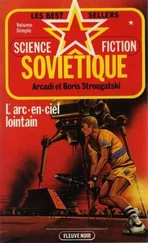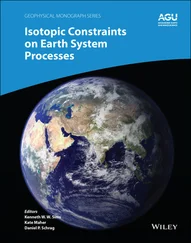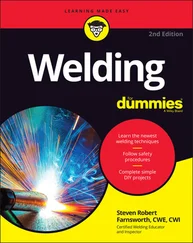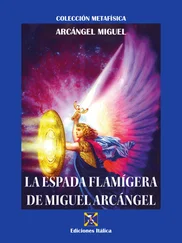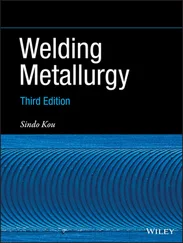David AmmermanProject Director at Gulf Interstate Engineering, MME, Texas PE 30+ years past-member of ASME, and member of API Committee: Pipeline Construction Voting Group
The book Arc Welding Processes Handbookhas been developed to address the need of a vast majority of people who want to know about welding, some of them also want to weld as hobbyists, or carry their passion for welding to be a professional welder. The book can also be used as a reference by field engineers and managers responsible for welding and fabrication activities. The book uses several figures and illustration that are available in the public domain, yet wherever it could be identified, the credit has been assigned to the source.
The book will provide readers and practitioners of the profession with an understanding of nearly all aspects of arc welding. The book covers the theory, the principles of the processes, the equipment, and the techniques that would improve the competency in welding, for each welding process. A good number of tables and illustrations are included to accentuate the points as well as to give readers familiarity with things that may or may not be available in their work or school trade workshops.
Chapter 1introduces the reader to all possible welding process, including arc welding, electric resistance welding etc.
The practice welding procedure (WPS) given especially in Chapter 2on SMAW process should prove a good basis to start welding and develop into an experienced welder. From here, one can move forward with other processes using the practice welding procedures included in Chapter 3on GTAW, as well as GMAW processes in Chapter 4. For those who want to start welding, they can start with settings in these procedures and preparations and make changes to develop their skills around them. But it is not necessary to strictly follow this sequence, if someone has already developed the skills in any other process and wants to move to any other process.
The skills required to master FCAW process in Chapter 5almost mimics the basic skills of GMAW in Chapter 4, and once this process is mastered, moving forward with the FCAW process should not be difficult at all.
The process of SAW in Chapter 6is very different and very few welding schools will have this process in house. For students to practice on it, in most cases it will have to be learned and mastered on the job. But the chapter on SAW process gives the reader abundant information and familiarity with the process that they can step up to the opportunity when it becomes available.
Included in Chapter 7is the welding symbols and how to use them, to read those symbols on fabrication drawings and weld accordingly. Reading and understanding the language of welding is an important step in becoming a successful welding professional. The chapter also includes other miscellaneous but important information that would come handy to any welding professional. The most important information is the detailed description of welding symbols and how to use and read them.
This book is best used in a workshop where the reader can pick up the welding torch or holder and try to convert the words from the book to an actual weld.
Ramesh SinghKaty, TX June 2021
1
Introduction to Welding Processes
1.1 Synopsis
The chapter introduces the most common welding and joining processes, by discussing the acceptable definition of welding, and the elementary understanding of skill development steps required to be a welder or a welding machine operator.
Joining processes, definitions, welding, arc welding, arc efficiency, heat, heat affected zone (HAZ), solidification.
When we speak of welding, various images comes to our minds. Depending on persons’ knowledge and experience with the process that can be various, simple or complex. But one thing that can be common to all those images and pictures is that the process of joining two pieces of metal to create a useful object.
This establishes one aspect of the term welding, that is, that the welding is a metal joining process. Let us explore a little more about what is welding, and how it is different from other Joining processes?
There have been discussions and sometimes arguments on describing if welding is an art or a science. Mundane as it might appear the question is pertinent and, in my experience, some well-meaning experts often miss the point as to which part about the term “welding” they are referring about to support their arguments. Welding as the physical and practical part of joining two materials in most part is an art, it requires dexterity in hand, and hand-eye coordination to do a good job. However, the study of the heat and melt flow solidifications prediction, prediction of material behavior under heating and cooling cycles associated with the term welding is a science, an essential pat under the science of physics. Hence it is both an art, and a science of joining metals by use of adhesive and cohesive forces between metals by welding, brazing, and soldering some of these joining processes produce metallurgical bonds. Person with the balanced knowledge of both science, and art parts of welding is expected to do much better work on either side of the argumentative divide. Further we get into the depth of the study, the line of separation from art to physics starts to become more evident.
Both process metallurgy and physical metallurgy is involved in welding. Welding is a unique metallurgical activity as it involves a series of metallurgical operations similar to metal production, like steelmaking and casting but in a rapid succession and on a very small scale. In science side of welding the thrust of the study is on the materials behavior during application of localized heat, and cooling and solidification physics.
The AWS definition for welding is “a materials joining process which produces coalescence of materials by heating them to suitable temperatures with or without the application of pressure or by the application of pressure alone and with or without the use of filler material”.
Welding is often compared in a very rudimentary way with casting. The comparison with casting involves the fact that in welding a volume of molten metal is solidified (cast) within the confines of a solid base metal (mold). The base metal may have been preheated to retard the cooling rate of the weld joint just as in casting molds are preheated to slow down cooling and reduce “Chilling” of the casting. Upon solidification, the weld deposit or casting can be directly put into service, as the welds are often used in as-welded condition or may be heat-treated or worked further on as required. However, such comparison is not an accurate depiction of welding process, nor it is a fair comparison. For example, in welding the base metal “mold” is part of the weld, unlike the mold of a casting, which is removed after solidification, so unlike casting process, what happens to the “mold” is of significant importance in welding. Unlike casting, in welding the solidification and the nucleation of weld metal takes effect on the basis of the base metal grain structure that is just adjacent to the molten metal of welding and a unique set of metallurgy is created in the base metal that is heated to above austenitic temperature range, this small band of base metal is called heat affected zone (HAZ).
Welding involves small area relative to the full size of the structure, the base material. Thus, a weld is a very small mass of metal, mostly two metals that are heated very rapidly by intense heat and cooled rapidly, this rapidly heated and cooled small area often overlap each other in succession to create yet another complex metallurgical condition. The dissipation of heat is by all three modes; Conduction, Radiation and Convection. Often the large surrounding mass of colder base metal is heated by conduction process, which is the major source of heat transfer from weld. The heating and after welding the cooling process are dynamic, equilibrium conditions are seldom seen in conventional welding operations, in fact welding conditions represent a great departure from equilibrium. That is the reason weld zones often display unusual and verity of structures and properties, all this within the confines of a very small area affected by welding process.
Читать дальше


